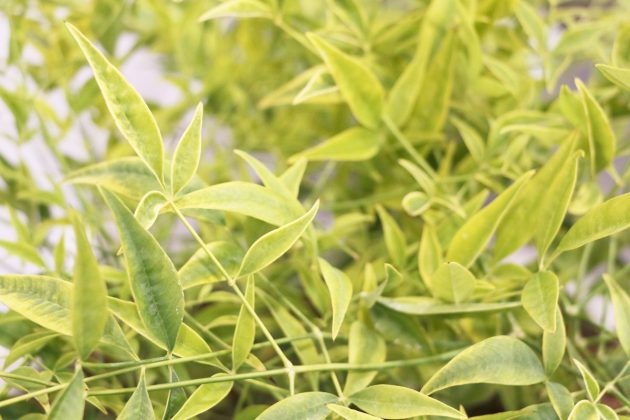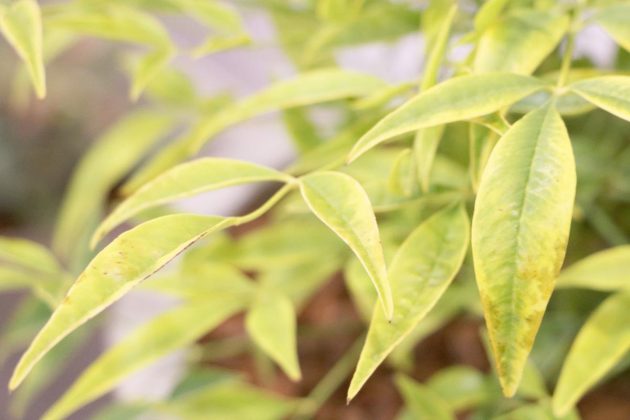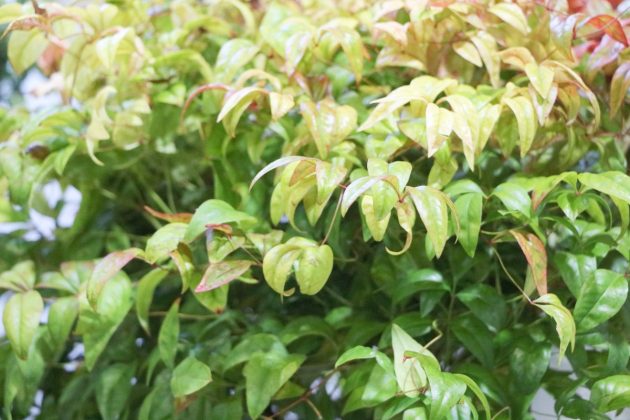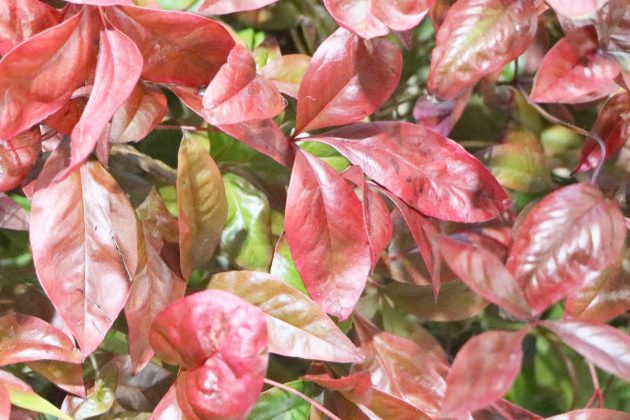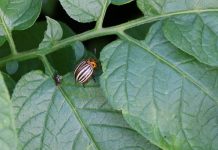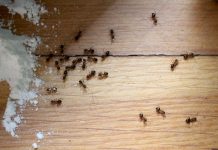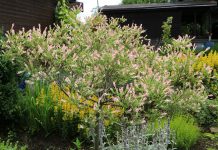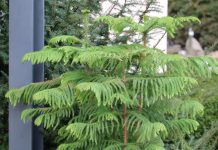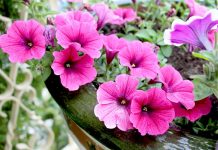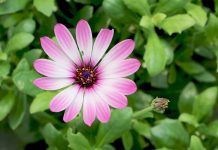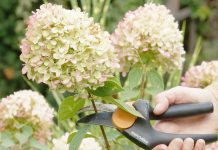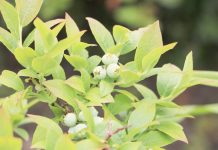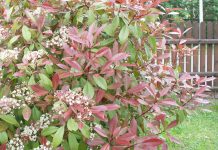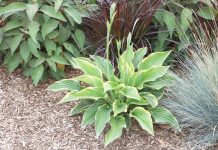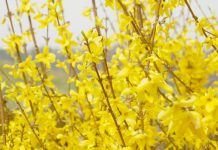In the bed and tub the sacred bamboo bewitches us all year round with decorative attributes. The leaflets have a pretty color play from reddish-green to purple. In the summer, white panicles blossom above the elegant foliage, followed by bright red berries in autumn. This maintenance instruction shows practical, how the sacred bamboo fulfills its role as a supporting element in the creative garden design with bravery.
Plant Profile
Contents
- family of the barberry (Berberidaceae)
- single sort of the species of heavenly bamboo (Nandina domestica)
- other terms: sacred bamboo, Nandine
- evergreen ornamental bush
- growing height 200 to 300 cm
- perennial up to -12 degrees
- feathery green leaves in sprouting red with purple autumn coloration
- white panicle blossoms from June to August
- red berry fruits in autumn with long adhesion
- slightly poisonous fruit
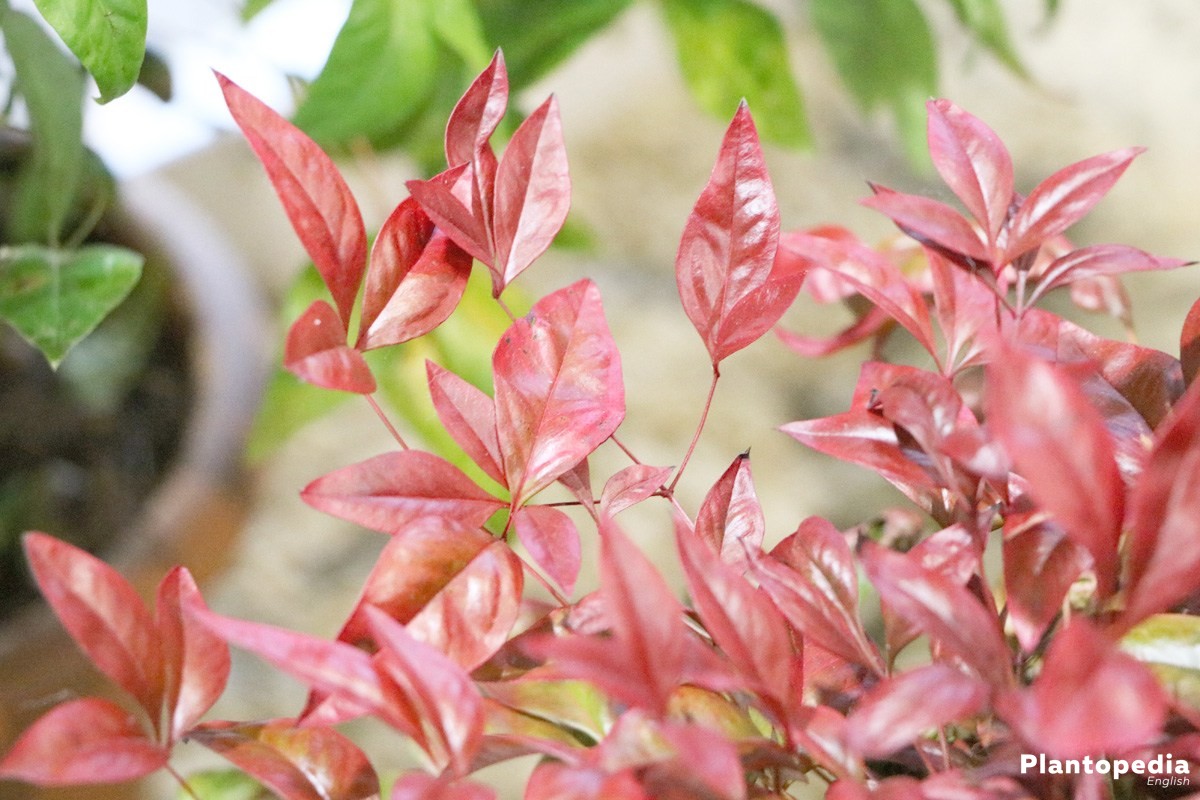
Care
From the temple gardens of Japan the evergreen heavenly bamboo found its way into the ornamental gardens of Central Europe. Its popularity is predominantly due to alternately colored feathered leaves, an elegant, white panicle blossom and bright red berries in autumn.
Creative amateur gardeners know how to use the floral treasures in order to cultivate a year-long view of the plant in winter-like locations. With a view to the conditional winter hardness, the tautly upright decorative wood spreads its playful charm mostly as a potted plant on the balcony and in the winter garden.
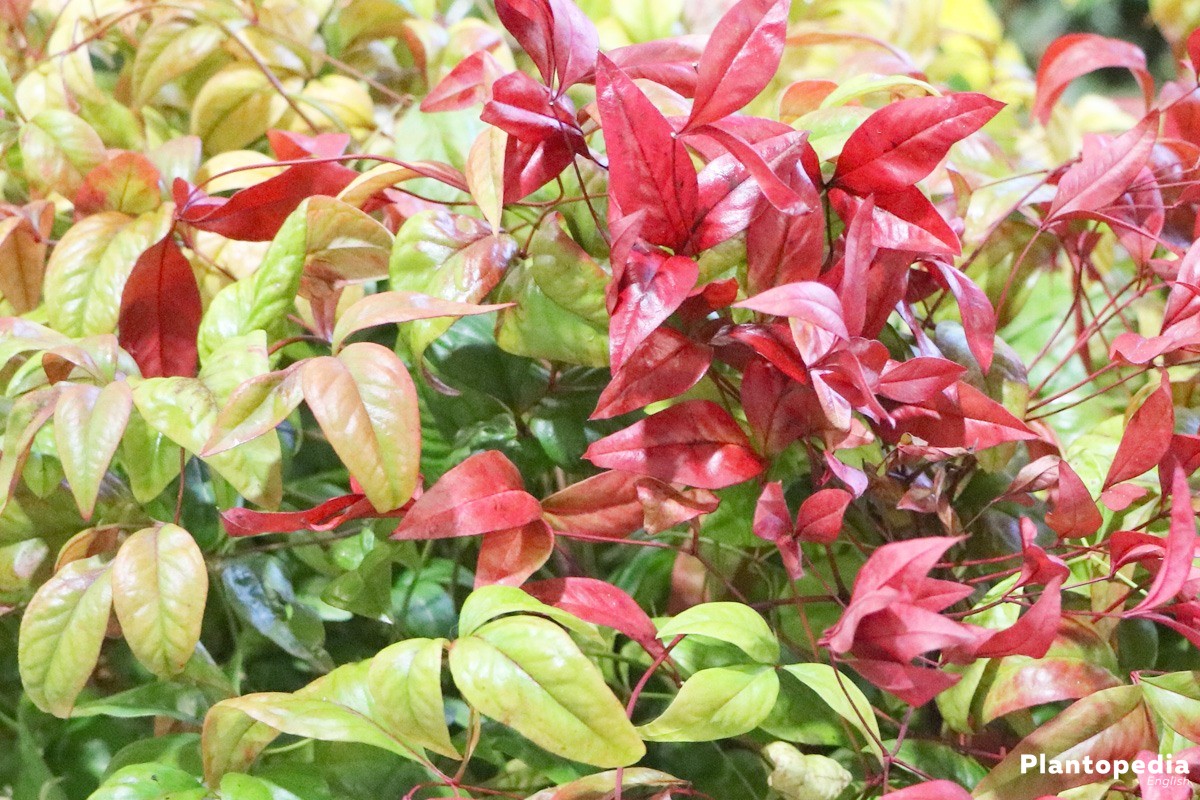
Which framework conditions are decisive for successful cultivation, teaches this maintenance guide. There is no botanical kinship with the woody sweet grass bamboo. The German name probably refers to the origin of the heavenly bamboo from the Japanese temple gardens.
Location
A heavenly bamboo throws the concentrated charge of its floral expressive power into the weighing pan at a location with these light and temperature conditions.
- bright location with mild sunshine in the morning or evening hours
- ideally located in a wind-protected, warm niche
The temperature minimum of -12 degrees can the Nandina domestica only survive for a short time. Therefore cultivation in buckets is appropriate in harsh winter regions. In mild wine-growing areas, the ornamental shrub grows very well in the open land, as long as it can not get under intense winter sun in temperatures under severe frost.
Floor Conditions
A sacred bamboo is well placed for professional care when it can stretch its roots in a soil with these characteristics.
- nutrient-rich, loose-humic and well-permeable
- fresh-humid, without danger of waterlogging
- a pH number from 4,5 to 6,0
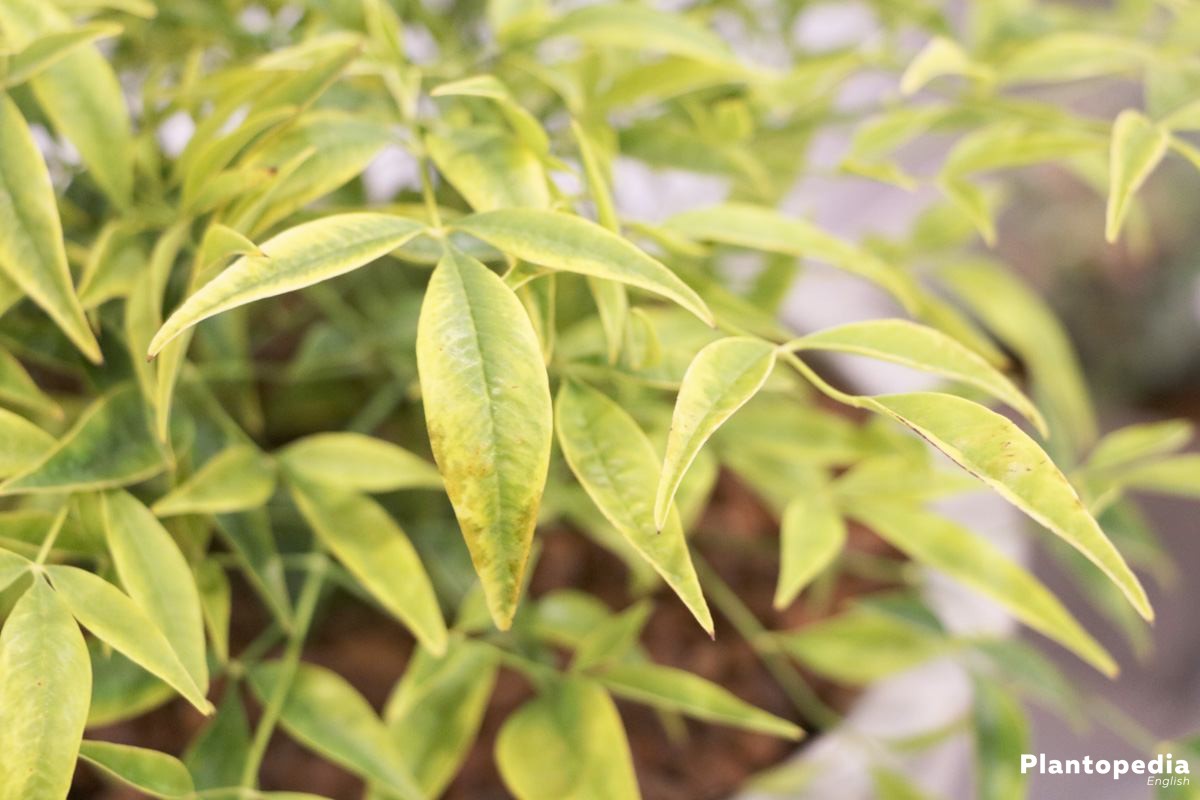
A sandy loamy soil with high nitrogen content fulfills the requirements particularly well. On the other hand, a place in dry, calcareous soil should be avoided. Therefore, high-quality bog bedding on the compost basis is the focus of attention in the bucket. The addition of perlite or lavage granules improves the permeability and effectively prevents stagnant moisture.
Watering
If the rain lasts, a heavenly bamboo holds the gardener on the trap. With his pronounced desire for water as an evergreen shrub there is an evaporation throughout the year, so there is regular need for watering. This is more frequently required in the tightly delimited substrate volume of the tubing than in the open air.
So you regulate the water balance with expertise:
- if the substrate surface dries 4-5 cm deep, it is poured every season
- run the water from the watering can slowly onto the root pane
- if small puddles are formed on the ground, or if the pot coaster is full, the need is covered
It is an advantage if a heavenly bamboo is poured predominantly with soft rain water. At least, the tap water should stand out for some time before it is used. In this way, no harmful calcium content can build up in soil – one of the main causes of leaf chlorosis.
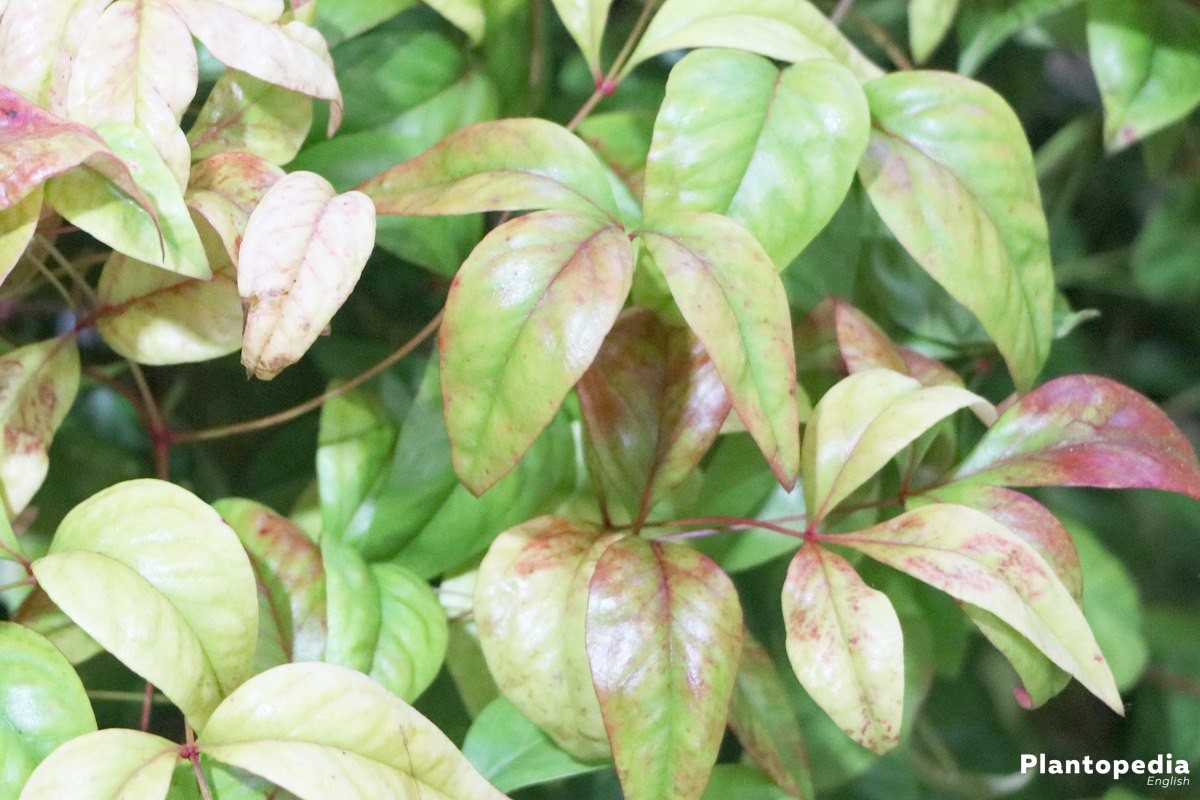
Fertilization
A balanced nutrient supply at medium level preserves the vitality and blooming. Fertilize a Nandina domestica in March / April and June / July with a fertilizer for ornamental shrubs. In the ecologically managed house garden the heavenly bamboo receives compost with horn chips from April to August every 4 weeks.
Only use the material superficially with the rake and then pour well with soft water. The nutrient reserves are more quickly absorbed in the bucket substrate, so that the application of liquid fertilizer covers the demand in a 2-week cycle.
Overwintering
In the Central European climate, a heavenly bamboo is classified as conditionally perennial. Therefore, a winter protection is obligatory in the open air, especially as the temperature minimum of – 12 degrees Celsius is only tolerated for a short time.
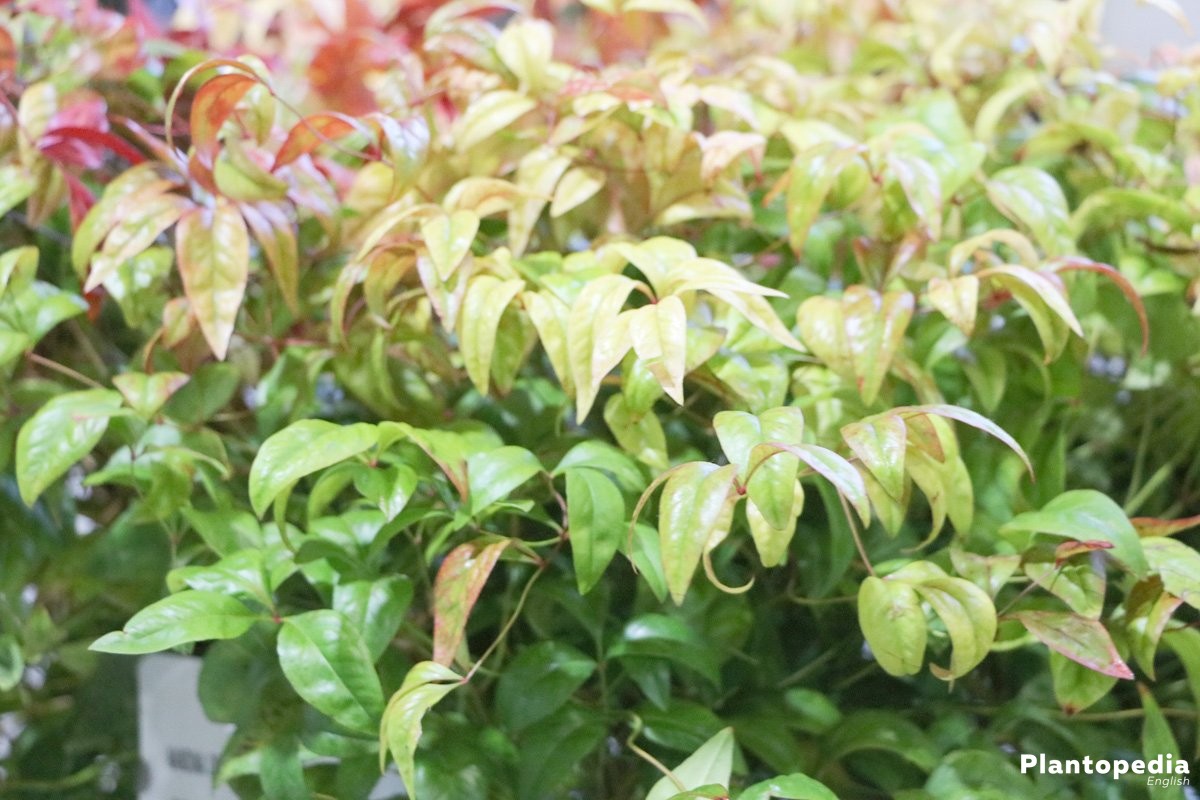
These precautions guide the wood during the cold season, without prejudice:
- at the beginning of the winter, hoard the root pane with autumn leaves, needles or compost of leaves
- cover the branches with fleece or jute bands
- in the case of cold, frost and sunshine, pour on mild days
Put a bucket on a wooden block in front of the south wall of the house. The pot is given a winter coat of jute, fleece or foil. On the substrate, a layer of pine needles or leaves keeps the frost at a distance. It is of advantage if a bright, frost-free winter quarter is available for a heavenly bamboo in the bucket, like an unheated staircase or a cool winter garden.
Cutting
With a leisurely growth speed, a Nandina domestica demonstrates Asian serenity. As a result, there is not every year a mold cut on the nursing program. In any case, the glory of blossoms and berries is getting a victim of every cut out. But the shrub does not get completely undisturbed, because all the deadwood should give way regularly.
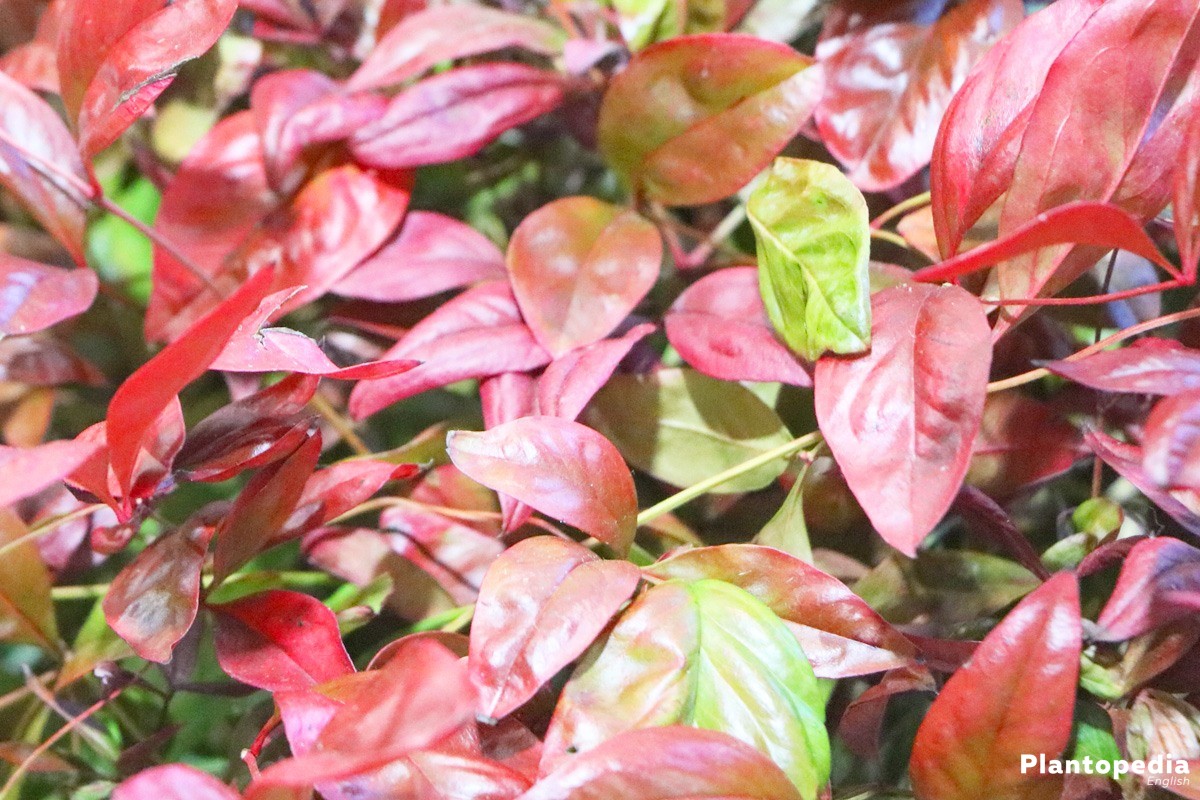
This is the right way to handle this aspect of cultivation:
- long shoots are cut back only in March or at the end of flowering
- shorten the branches by a maximum of one third
- place the scissors above a proliferation or opposite flowers
If you consider a cut as unnecessary, restrict the measure to a prune. To do this, cut off dead or frozen branches. Likewise, shoots which are directed towards the bushes or are too close together are to be removed.
Repotting
According to experience, a heavenly bamboo has completely rooted the bucket every 2 to 3 years. In connection with the yearly prune and the possible back cut, there is the chance for a larger pot in spring. Depending on the amount of growth achieved, it can be useful to have a helping hand to be available.

The new pot should exceed the previous diameter by a maximum of one third. A significantly larger container animates the heavenly bamboo to an increased root growth, which runs at the expense of leaf growth and flowering.
To change the ornamental shrub:
- make a drainage of blow clay or clay shards in the new bucket on the floor
- fill a first layer of nutrient-rich plant soil
- drain the heavenly bamboo to shake out the soil
- plant the shrub so that the previous planting depth is preserved
- press the substrate well for a stable bottom closure and spill with soft water
If you have a clear view of the root braid, use this opportunity to cut out rotten, soft rhizomes. If there are larger interfaces, they should be dusted with charcoal ash or stone powder. If pests stalk in the root area, rinse them thoroughly.
Breeding
For the breeding, the heavenly bamboo offers the delicate and lengthy sowing as well as the uncomplicated, fast scion method as well as the division. All three procedures are explained in more detail below.
Seed
In the bright red, globular fruits are between 1 and 3 brownish seeds. These are first to be freed from the pulp and cleaned. Please note that the berries are slightly poisonous and carry out all work with protective gloves. The sowing itself takes place in stages, since the seeds are cold germ buds, which must first go through a stratification.
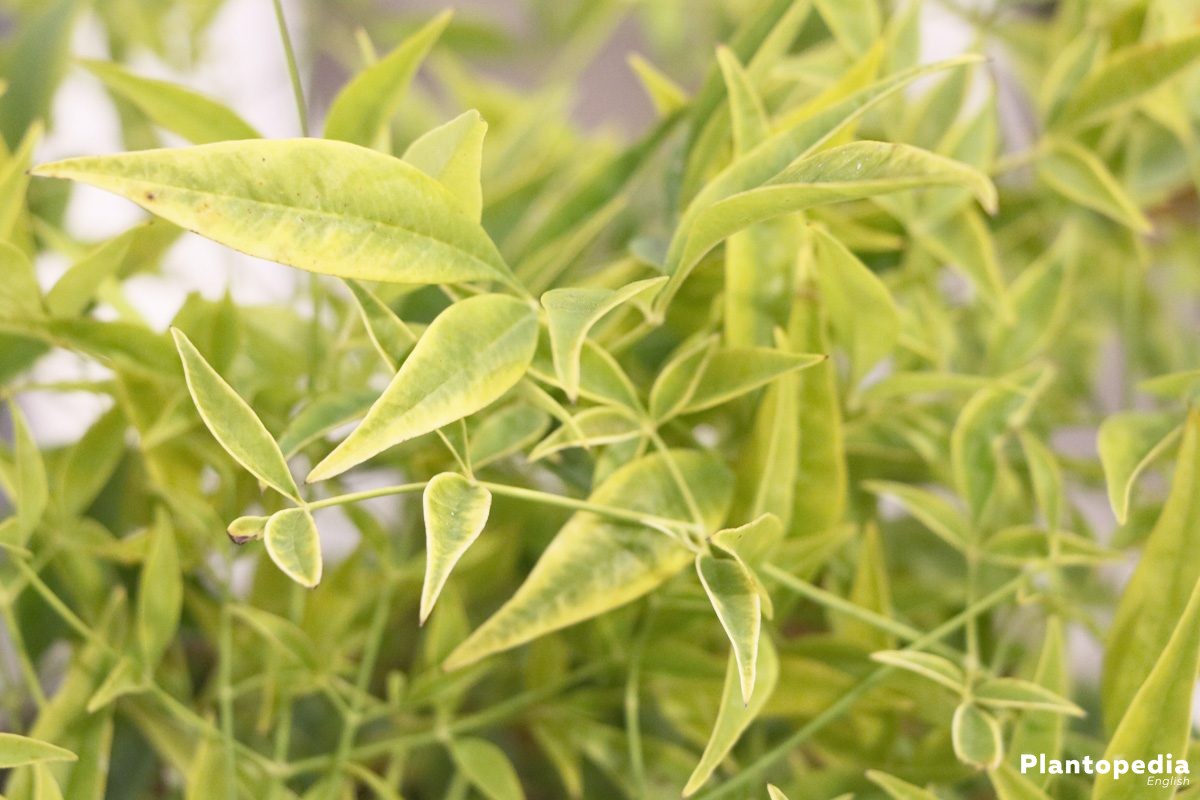
Specifically, this requirement implies that a winter should be simulated for 3 months to break the germination inhibition. To do this, fill the seed with moist sand in a plastic bag and place it in the vegetable compartment of the refrigerator. Regularly check the moisture content in the bag, because the seed may not dry out.
In this sequence it goes on:
- after the expiration of the three-month cold season remove the seeds from the sand
- fill a seed bowl with potting compost and moisten with soft water
- press the seeds a maximum of 1 cm deep into the substrate at a distance of 5 cm
At the warm, half-shaded window place, keep the seed constantly moist. The timeframe for germination extends for 1 to 6 months. An overlapping, transparent hood has a beneficial effect on the process. However, this method carries the risk of mold, so that daily airing is indispensable. Only when a seedling has at least 3-4 leaf pairs, it is isolated.
Cuttings
The vegetative cuttings propagation is not only more rapid, but also produces young plants with the same attributes of their mother plant.
This is how you proceed:
- in the summer cut semi-wooded, non-flowering twigs with a length of 10-15 cm
- a leaf node is located at the top and bottom of the cuttings
- defoliate each offshoot in the lower half and plant in a pot with a potting compost
- keep the substrate constantly moist under a transparent hood
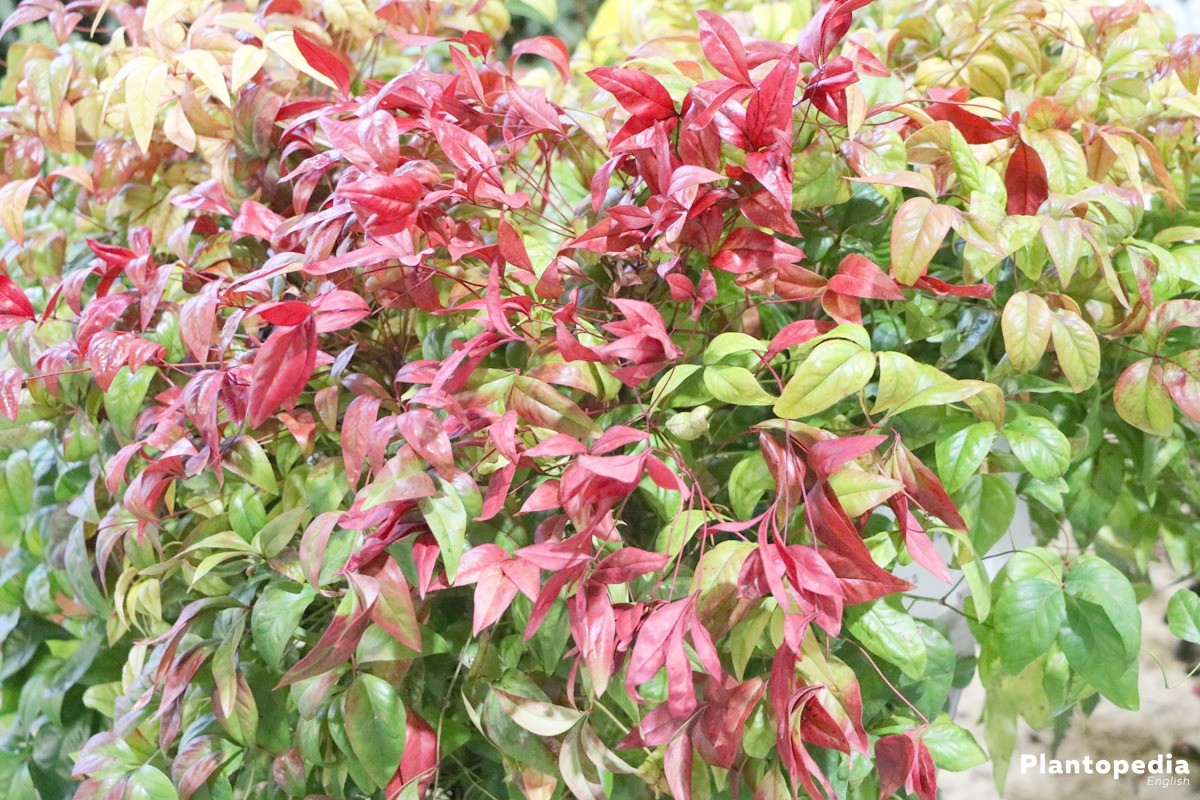
If a cutting is pushed out again, the rootedness is in the planned frame. As soon as your cutting has completely rooted in the pot, repot it into a larger bucket. From this point onwards, the young heavenly bamboo will benefit from the normal care program.
Propagation
This variant of the vegetative propagation produces only a few young plants, but convinces with little effort and a high success rate. Suitable for the division is a well-rooted, perfectly healthy mother plant. The best time for action is in spring during the months of March and April.
That’s how it works:
- loosen the root ball of the heavenly bamboo with the grave fork and lift it out of the ground
- cut or saw the rhizome braid into 2 or more segments on a stable support
- a part has at least 2 shoots
Plant the young Nandina domestica at a distance of 1.5 to 2.5 meters to a half-shady site in the soil which has previously been compost-enriched. A cut back by one third to two thirds compensates for the lost root mass. A constant supply of water is a key factor in the rooting process.
Diseases
Immigrated from the Asian region, a heavenly bamboo is lacking in the necessary resistance to classical plant diseases. The following overview identifies symptoms of common infections and tips for fighting.
Fungus diseases
A mealy-white covering on the leaves indicates on powdery mildew. Cut off all infected plant parts and dispose of them in household waste. In the early stages, you fight the disease with a mix of 1 liter of water and 125 milliliters of fresh milk. Preventatively, overhead irrigation should be avoided as the fungus spores multiply explosively in warm weather on moist foliage.
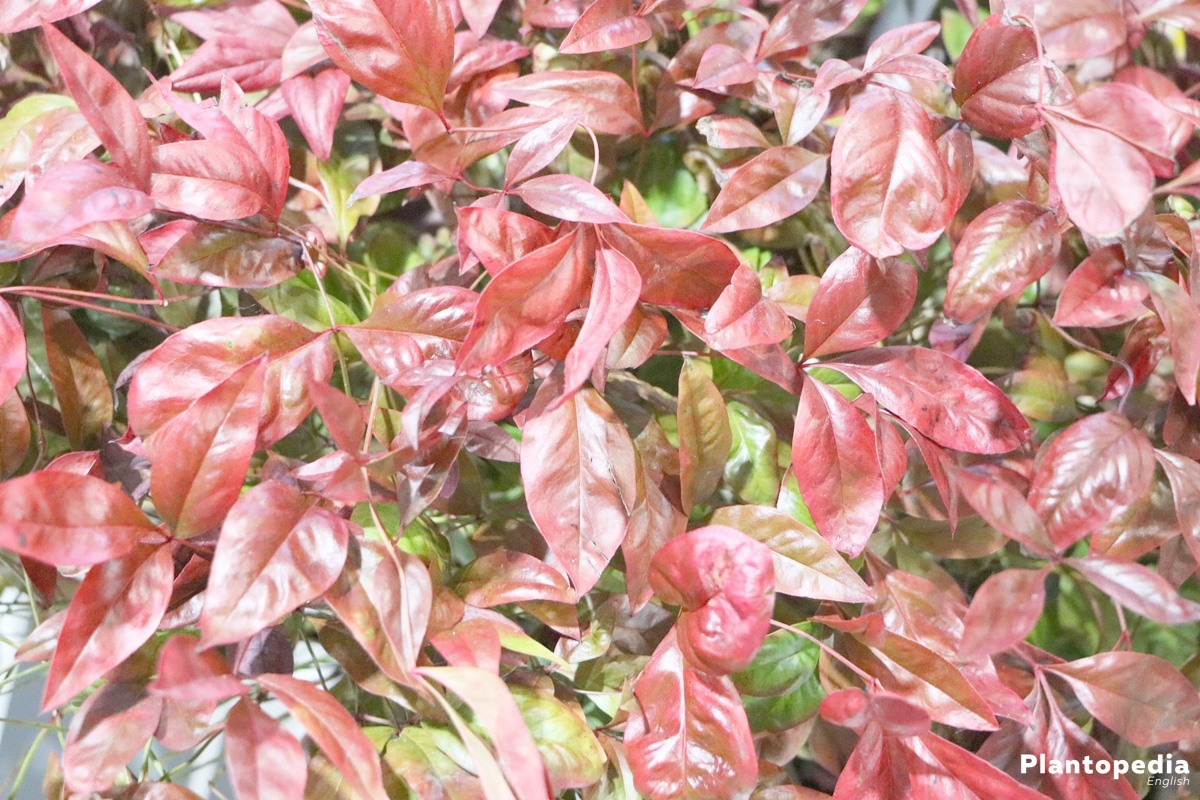
Other fungus diseases manifest themselves as round leaf spots on the tops and bottoms of the leaves. As in the case of powdery mildew, cut off infested leaves. For the control, effective fungicides are available in the retail trade which are approved for domestic and garden plot.
Root rot
Pale green discolorations associated with wilt symptoms signal phytophthora root rot. There are currently no effective antidotes available for this disease. In the early stages, the heavenly bamboo is planted in fresh, dry soil.
To prevent the spread of the pathogens, a strongly attacked heavenly bamboo should be removed. For bedding shrubs, a soil exchange is then recommended in order to remove the contaminated soil. Triggers for the disease are over-fertilization and giddiness.


